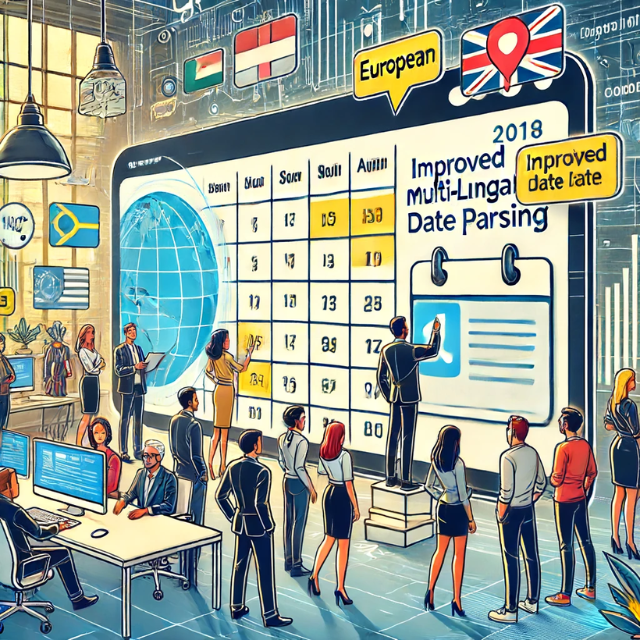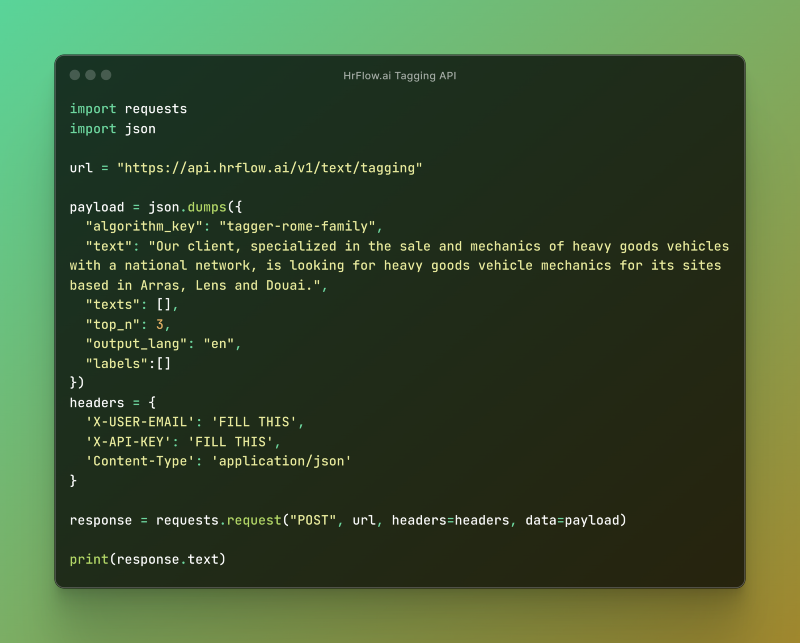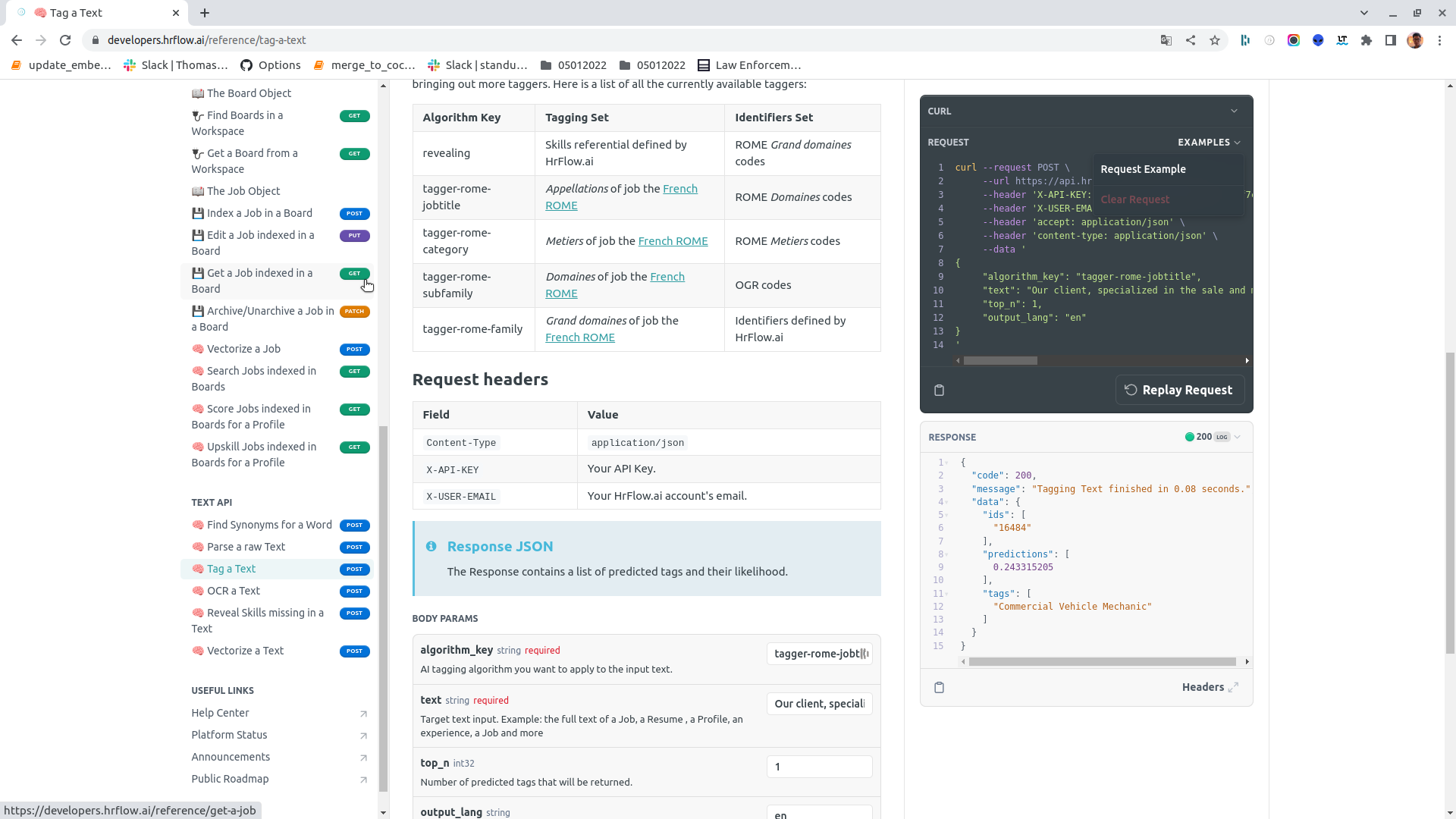🎁 What's new in HrFlow.ai?
Discover our latest updates for November, keeping you in the loop with our newest innovations and developments.
WHAT'S NEW IN NOVEMBER 2022:
- AI Modules:
- Profile & Text Parsing API: Improving Multi-lingual Date Parsing
- Profile Parsing API: Extending Support to Octet-Stream Media Formats
- Text Tagging API: New AI module for Talent & Workforce Data Classification

1. Profile & Text Parsing API: Improving Multi-lingual Date Parsing
We've upgraded our Profile & Text Parsing API to significantly improve multi-lingual date parsing capabilities.

😍 Why it’s a big deal for HrFlow.ai users?
This update includes enhanced detection of dates in our 43 parsing languages. Additionally, we've refined our algorithms to recognize:
- context-specific terms like
"today"and its synonyms across multiple languages. End Dateof section experiences and educations of the Profile Object.
2. Profile Parsing API: Extending Support to Octet-Stream Media Formats
We are pleased to announce that our Profile Parsing API now supports octet-stream files.
😍 Why it’s a big deal for HrFlow.ai users?
The term octet-stream refers to a generic binary file format used on the internet— case of most of online-generated resumes. It's represented by the MIME type application/octet-stream. This MIME type is used as a default or fallback option when the actual file type of the data cannot be accurately determined by the server or application sending the data.
This situation used to lead to a failure in Profile Parsing, as our system couldn’t properly recognize or process the file without specific format information.
We've updated our Profile Parsing API to handle documents in the octet-stream media format, which often lack proper file extensions. This enhancement ensures seamless processing of many online-generated documents.
3. Text Tagging API: New AI module for Talent & Workforce Data Classification
We are happy to announce our latest AI module for Talent & Workforce Data Classification: Tagging API.

😍 Why it’s a big deal for HrFlow.ai users?
Our users can now automatically categorize and classify HR data (texts, documents, sections, paragraphs) according to a library of Taxonomies.
The Tagging API’s first release includes 4 AI algorithms, called taggers, associated to 4 different taxonomies (dictionaries of predictions):

| Tagger Name / Algorithm Key | Tagger Prediction / Labels Taxonomy |
|---|---|
| tagger-rome-family | predicts the job family (Grand Domaine) associated to the french national taxonomy. |
| tagger-rome-subfamily | predicts the job subfamily (Domaine) associated to the french national taxonomy. |
| tagger-rome-category | predicts the job category (Fiches Métiers) associated to the french national taxonomy. |
| tagger-rome-jobtitle | predicts the job title (Intitulé de poste) associated to the french national taxonomy. |
| tagger-hrflow-skills | predicts hard and soft skills associated to HrFlow.ai skills graph |
The JSON output of the API provides the list of the most likely predictions with associated names, IDs, and probabilities.
❓Community Support
For general help using HrFlow.ai, please refer to the official HrFlow.ai docs.
For additional help, you can use one of these channels to ask a question:
- Slack (to join our community of 1200+ HrTech developers & founders)
- GitHub (Open-source, Contributions)
- Twitter & LinkedIn (Get the news fast)
- F.A.Q (Get answers to frequently asked questions)
- Join our office hour (Live 30min video call)
Best wishes,
The HrFlow.ai Team

